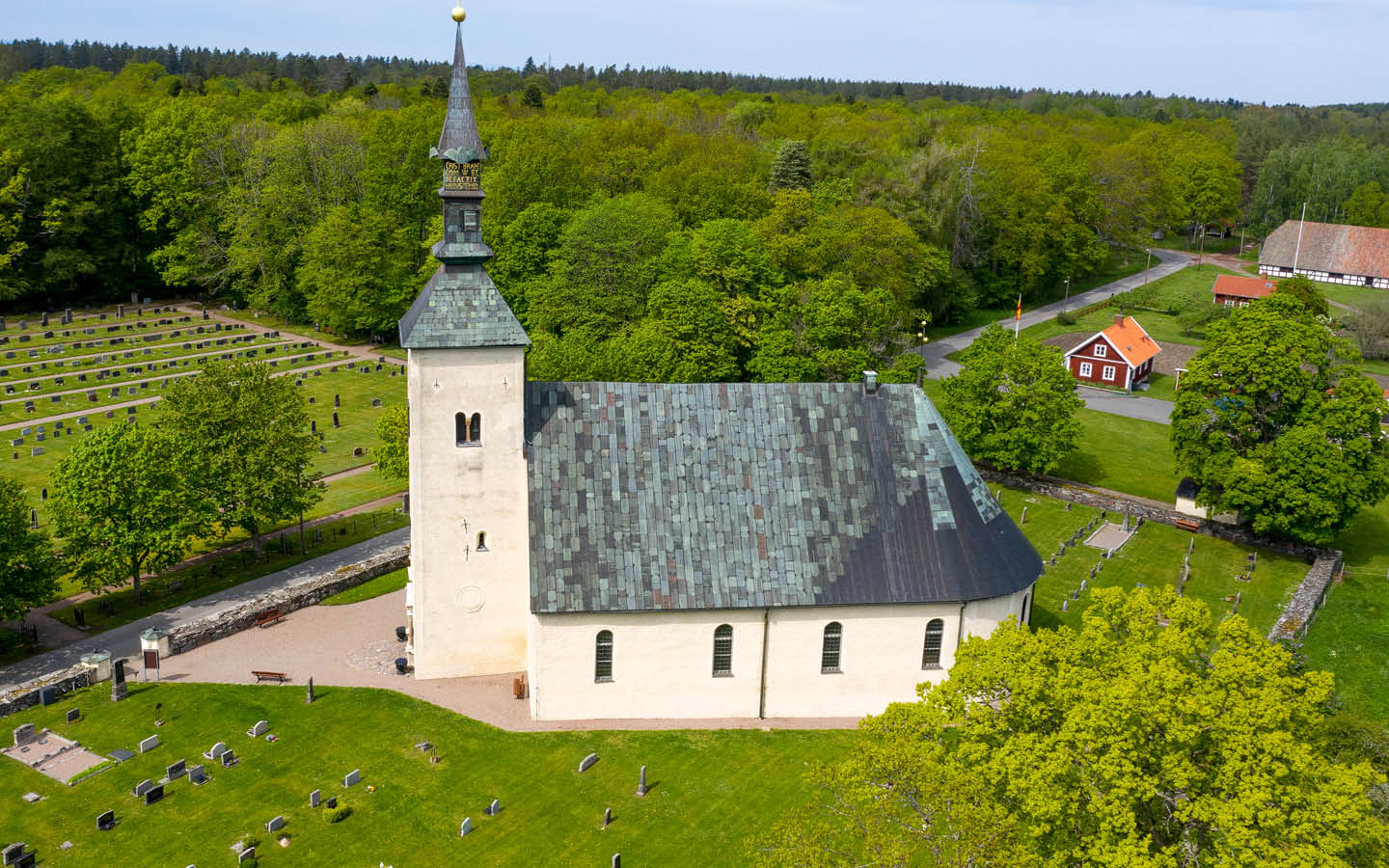The 800-year-old silver coins found at Brahekyrkan church in Visingsö.Jönköping County Museum
Posted on 04/13/2024 11:52:46 PM PDT by SunkenCiv
From a distance, the slate gray roof and central white tower of the Brahekyrkan church appear charming. The idyllic building is situated on a small island in southern Sweden and surrounded by a cemetery dotted with flowers.
So archaeologists weren't surprised when a construction project at the church uncovered several skeletons — but the grave held an 800-year-old mystery, too.
Archaeologists began excavations at the Brahekyrkan church in Visingsö to prepare for the installation of a geothermal heating system, the Jönköping County Museum said in a March 27 news release.
On the first day of the excavation, the team found two skeletons, Anna ödéen, an archaeologist with the museum, said in the release. One belonged to a man between 20 and 25 years old, but the other was not identified.
As they cleaned the grave, three silver coins emerged, ödéen said. Then, more coins surfaced near the skeleton's left foot.
In total, archaeologists found 170 silver coins dating between 1150 to 1180, the museum said. Photos show the handful of slightly tarnished coins.
Some of the 800-year-old artifacts had completely unknown designs, the museum said. Archaeologists described it as sensational and unique.
(Excerpt) Read more at ca.news.yahoo.com ...
The 800-year-old silver coins found at Brahekyrkan church in Visingsö.Jönköping County Museum
The other GGG topics added since the previous digest ping, alpha:

Why this is such an interesting find:
The years 1160 - 1180 are two decades when the Swedish kingdom was fought over by the Sverkerska and Erikska families. During the latter half of the 12th century and until 1248 members of those families intermittently held the title of Swedish King.
The Sverkerska family had its main hold in Östergötland (to the east of Visingsö) and was often allied with the Catholic Church. The Erikska family heralded from Västergötland (to the west of Visingsö) and had its power base mainly among the lords and chieftains of the area that made up Sweden at that time.
Unfortunately, not many written records from this era have remained, and therefore these coins may be very useful for the historians.
It was safer then a bank which I guess did not exist.
The owners of those coins were probably killed.
The owners buried the coins with the dead but they themselves were probably killed.
Hey look! The geothermal project is paid for...

The reverse (or obverse) of those coins seems to have a similar design found on Oak Island, and medieval churches in Europe- the cross with four dots.
Possibly Templar?
“Some of the 800-year-old artifacts had completely unknown designs”.
Now THAT’S interesting!
Thank you for the information. That’s really interesting.
Arcade tokens?
Looks Templar related to me as well.
I see the Templar cross with the four dots on some of them.
Erik Jedvardsson (later St Erik) lived 1120 - 1160, king between 1150-1160 is thought to have organised a crusade in the East ie Finland and the Baltics of today. His father Jedvard Knutsson Bonde took part in a crusade to Jerusalem. Templar? However, putting gifts in the graves was more a heathen than Christian custom.
Thanks SB!
Probably blood money.
A man could deal with living in a landscape like that.
Their commissary accounts for the afterlife?
Awwww….i want one.
Disclaimer: Opinions posted on Free Republic are those of the individual posters and do not necessarily represent the opinion of Free Republic or its management. All materials posted herein are protected by copyright law and the exemption for fair use of copyrighted works.